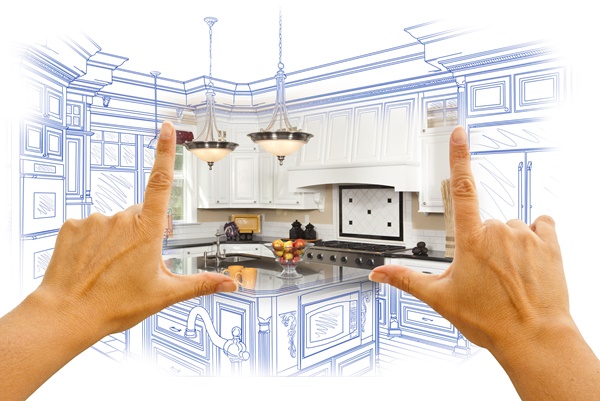It’s Tool Time: The Ultimate List of Home Renovation Tools and Equipment You Need
Planning a massive home renovation? Don’t get stuck without the tools you need. Here’s our list of must have home renovation tools and equipment.
If you are planning a home renovation, the first thing you will need is the right home renovation tools. And buying the wrong tools is one of the first places where you can lose money.
Does this already sound stressful? If so, relax, because I have got you covered with this ultimate list of tools for home remodeling. Once you know what these tools are, you will be able to save time and cash. … And stay out of that 46% of stressed out, over budget homeowners.
Sensor Tools
Before diving into any major renovations, a smart thing to do is to get yourself some sensor tools for home remodeling. Sensor tools allow you to locate studs, plumbing pipes and electricity cables.
A Pipe and Cable Finder
Water pipes and electrical cables are (hopefully) hidden from view within your walls. Anytime you cut, drill or demolish a wall, you run the risk of encountering one of these. Cutting through a water pipe or an electrical cable can quickly turn your DIY session into a day from hell. Not only do you run the risk of being shocked – but you will also have to repair the damage. To avoid this, invest in, or hire, a pipe and cable finder.
A Stud Sensor
Stud sensors are handy little tools that electronically sense the location of studs in your walls. If you are attaching something to the wall, it is very important that you drill or nail it in where there is a stud to bear the weight. Guessing where studs run is a recipe for failure. Not to mention extra work! Which is why I recommend you save yourself frustration, and pick up a stud finder.

Home Improvement Shows That Will Inspire You to Change Things Up
bet you’re looking for new ways not only to tackle your drawers and closets but also to take on a bigger project. For us, nothing makes us feel more inspired than watching a home improvement show. From simple fixes to major overhauls, home renovation series are both wildly entertaining and incredibly inspirational. Lucky for you
some standout offerings for both novice and professional DIYers. If you are looking for your latest project (or simply want to watch other people transform their spaces from the comfort of your own), we suggest binging one of these series now

WHAT IS THE DIFFERENCE BETWEEN REMODELING AND RENOVATING?
REMODELING ≠ RENOVATING
For design and build professionals, the words “remodel” and “renovate” have two very different meanings, although they are used interchangeably.
Let’s start with the definition of the words first. According to the dictionary definitions:
Remodel means “to change the structure or form of something.”
Renovate means “restore to a good state of repair.”
HOME REMODELING
Changing The Use of Space
A remodel will include changing the use of a space. A remodel is altering the structure and style of a space and completely transforming it. When you are changing the layout of a room reconfiguring the floor plan, you’re remodeling.
Improves Functionality
In a kitchen remodel, for instance, you may decide to combine the kitchen with the living room and create an open concept kitchen layout. Or perhaps you’d like to install a kitchen island to create more functional space for cooking
Breaths New Life Into A Room
If you’ve started gutting, adding, or removing walls, raising ceilings, or expanding the square footage of your home you’ve crossed over into remodeling territory. Whatever it is, remodeling breathes new life into a room, giving the space a whole new look and feel.
HOME RENOVATION
The Act of Renewing
In home construction, this includes re-painting, re-facing cabinets, installing new light fixtures, or adding other finishes and fixtures.
Update & Upgrade
The original purpose isn’t to drastically alter, but rather, to update to a new standard. Renovating a room in your home, if it’s the kitchen, will make the space attractive, and add value to the home
Cosmetic Improvements
Remember that a renovation simply means you’re updating an existing structure with cosmetic changes, not significant alterations to the existing structure. For example, replacing your old windows with new ones is a renovation project

Home remodeling time: things to know about insurance coverage
I’ve been through five major remodeling projects, including rebuilding after Hurricane Sandy, and I’m planning a full kitchen remodel next year. I’ve learned a lot about the insurance coverage issues for the homeowner, the contractor and the subcontractors, and I’m sharing what I’ve learned.
Some people (like me) hire a general contractor to manage the renovation process while others prefer to manage the project themselves. Some homeowners are willing to be do-it-yourselfers and actually do some tasks while hiring licensed subcontractors for plumbing and electrical work.
However you choose to remodel, keep this in mind: The homeowner, the general contractor and the subcontractors — plumbers and electricians, for example — all need insurance coverage.
Contact your home insurance carrier or broker to confirm whether your policy covers your home and property while it’s being remodeled. For example, if you have to move your furniture out of the rooms that are undergoing renovations, consider getting a storage container to put in your driveway. I rented a 40-foot unit when I added a second floor to my single-story ranch and filled it with furniture and everything from my attic.
Your homeowners policy should cover the contents in the container, but confirm the coverage with your broker. If you don’t have room for a container on site and you put your belongings in an offsite storage unit, you may need a separate policy.

How to renovate a home: A beginner’s guide
renovation, remodeling a home outside the city is a slightly different ballgame. While you won’t need board approval —and most cosmetic work, like painting the walls and refinishing floors, generally doesn’t require a permit at all—renovating from afar means giving up, at least in part, the security of boots-on-the-ground supervision.
Choose a long-distance-friendly contractor
Like any renovation job, the success of your project rides largely on the shoulders of your contractor. Make a point of meeting with at least three candidates in-person and onsite, so you can compare portfolios of past work (to get a sense of what types and quality of work a contractor has done) in addition to their bids. Beyond price and portfolio, consider the following: Does the person communicate well? Have they completed the type of work you want done? Have they received positive reviews? Can you imagine working with this person for the duration of the project?
If possible, speak to at least one such long-distance client as a reference. If that is not an option, ask the other references, “Based on the contractor’s communication skills, could you imagine working with him remotely?”
Set up a solid communication system and schedule
Since you’re not going to be able to oversee every step of your renovation in person, you’ll need to set up easy ways to communicate remotely, as well as a detailed schedule with your contractor. Communication will take the place of site visits, so it’s important to get it right. Discuss ahead of time how you’ll interact: Via frequent texts with photos? Detailed daily emails? Weekly calls by phone, Skype or FaceTime, with photos sent in advance? Some clients install drop cams (similar to a time lapse or security camera) to check in on progress.
Schedule your site visits
Ideally, you should aim to visit the site four times: to meet your contractor before hiring, to walk through the site and create a to-do list together, after demolition and before framing, and after installation of cabinetry, floors, etc. and before finishes, such as counters, backsplashes and hardware.